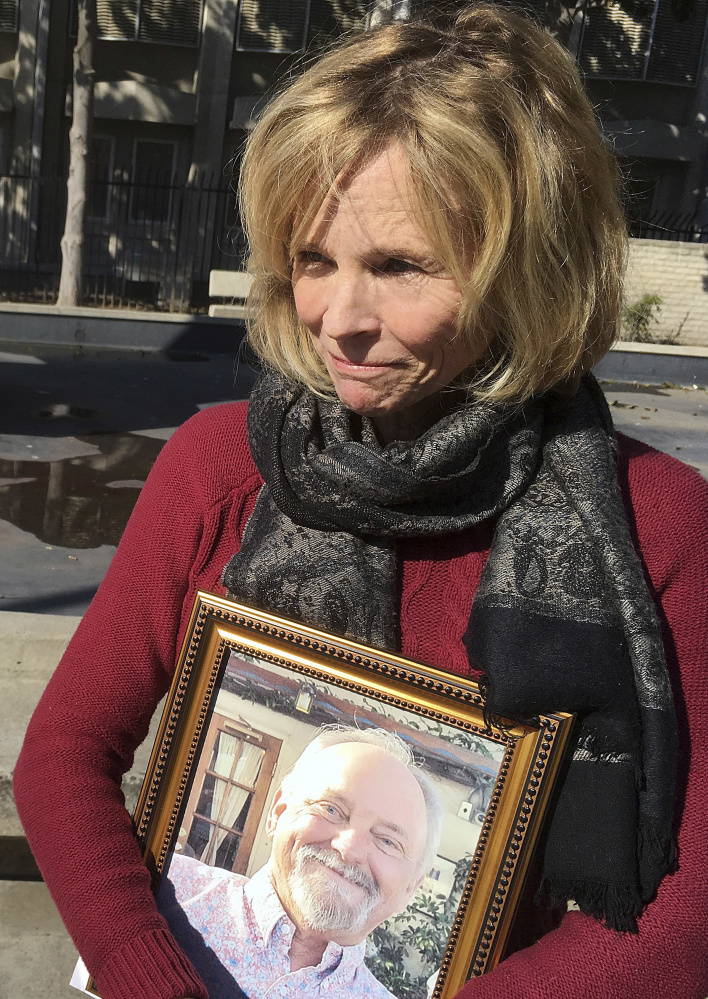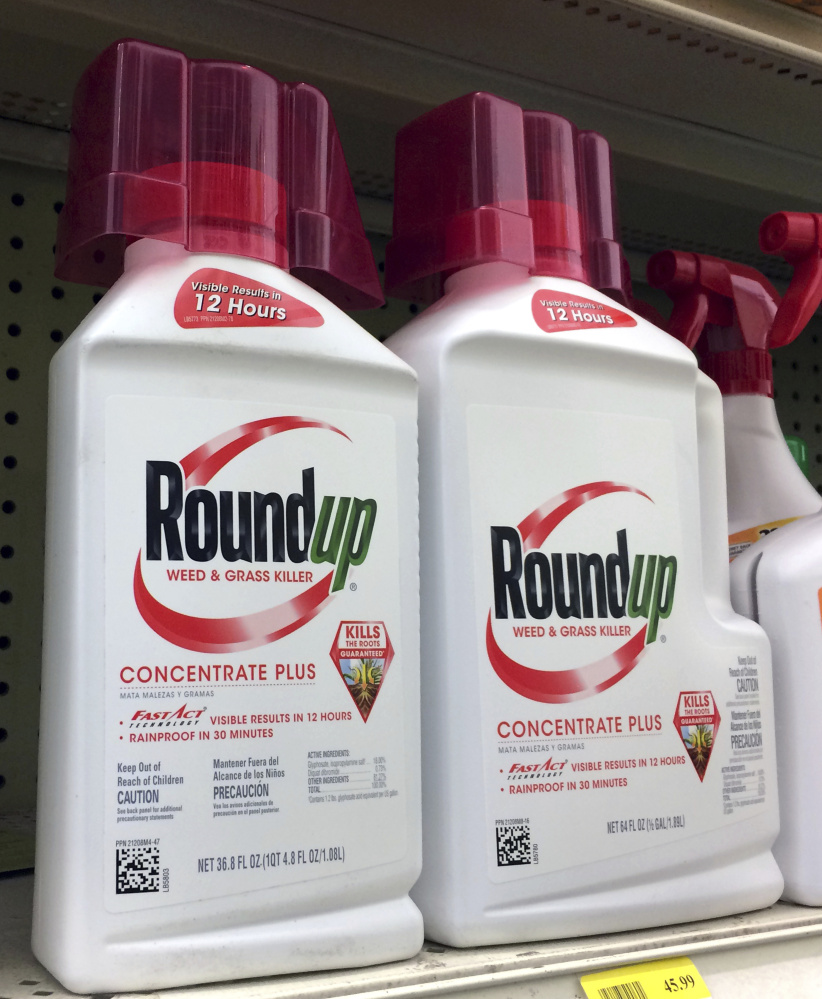Jack McCall was a fixture at the local farmers market, where he sold avocados and other fruits he grew on his 20-acre ranch in Cambria, on California’s central coast.
The U.S. postal worker and Little League coach was “very environmentally friendly,” said Teri McCall, his wife of 41 years. He avoided chemicals, using only his tractor-mower to root out the thistle and other weeds that sprouted on the flat areas of the ranch.
But he did make one exception to that rule – a fateful one, his wife now believes. For over 30 years, on the hilly parts of the ranch where he grew the avocados, and around newly planted fruit trees, Jack donned a backpack sprayer and doused weeds with the widely sold herbicide Roundup.
“He believed Roundup was safe,” Teri McCall said, noting that St. Louis-based Monsanto Co. has regularly touted its flagship product as harmless to people and pets.
In 2012, the McCalls’ 6-year-old dog, Duke, who accompanied Jack around the farm, fell ill with swollen lymph nodes in his neck and died shortly afterward of lymphoma – a type of blood cancer. Three years later, Jack discovered swollen lymph nodes in his own neck, Teri said. The diagnosis: a rare form of non-Hodgkin lymphoma, which killed him on Dec. 26, 2015.
MORE THAN COINCIDENCE?
“I thought, ‘That’s kind of a coincidence that they both got lumps in their neck,'” Teri recalled. “Then I thought about all the time Duke spent sticking his nose in grass that had been sprayed with Roundup.”
In March 2016, McCall filed a wrongful death lawsuit against Monsanto, alleging that the company concealed the cancer risk posed by a chemical called “glyphosate,” the active ingredient in Roundup, which she now blames for the deaths of her husband and their dog.
Hundreds of similar lawsuits are pending nationwide, all contested by Monsanto.
“To be clear: The underlying science behind glyphosate is not at question,” said Scott Partridge, the company’s vice president of global strategy. “Monsanto’s glyphosate-based herbicides have a long history of safe use and have been studied in real-world application, including the largest study ever of the actual use of pesticides by farmers.”
Monsanto’s Partridge contended that “cherry-picking isolated documents out of context is an attempt by the plaintiffs’ attorneys in pending litigation to distract from the science, which is not on their side.”
The use of glyphosate has grown n the past two decades. The chemical has found its way into the food chain – and into people’s bodies. A study in the medical journal JAMA showed that the number of Southern California adults who tested positive for glyphosate in their urine rose dramatically from 1993 to 2016, as did the amount of the chemical in those who excreted it.
In July, California added glyphosate to its list of cancer-causing chemicals under the Safe Drinking Water and Toxic Enforcement Act of 1986. The act, also known as Proposition 65, requires businesses to warn consumers if their products or facilities contain potentially unsafe amounts of any toxic substances known to cause cancer, birth defects or other reproductive harm.
California is the first state to “take regulatory action to protect our residents from this chemical,” said Olga Naidenko, senior science adviser for the Environmental Working Group, a nonprofit research and advocacy organization. The move is “a huge step and has global implications.”
The state’s Office of Environmental Health Hazard Assessment, which is responsible for listing chemicals under Proposition 65, has proposed a threshold of 1.1 milligrams of glyphosate a day for an adult weighing 154 pounds. That’s 122 times more stringent than the EPA’s guideline.
WARNING LABELS COMING
The state agency is studying testimony from a June hearing, to decide whether it should implement or revise its proposed limit. The Prop. 65 listing requires warning labels beginning next July.
Other companies, including Dow AgroSciences and DuPont, also sell products containing glyphosate, since Monsanto’s patent expired in 2000.
California’s decision to list the chemical was triggered by a 2015 study from the World Health Organization that described the chemical as “probably carcinogenic to humans” and cited “convincing evidence that glyphosate also can cause cancer in laboratory animals.”
The organization’s International Agency for Research on Cancer found a “positive association” between exposure to glyphosate and malignancy in humans, though it added that other explanations could not be excluded. In particular, the international agency found a possible link to non-Hodgkin lymphoma, the type of cancer that killed Jack McCall.
Monsanto sued in state Superior Court to overrule the California listing but lost in March, and it has appealed that decision. Its bid to temporarily halt the cancer listing pending trial was rejected by a state appellate court and the California Supreme Court. The company says that labeling glyphosate a cancer risk is unjustified.
Send questions/comments to the editors.




Success. Please wait for the page to reload. If the page does not reload within 5 seconds, please refresh the page.
Enter your email and password to access comments.
Hi, to comment on stories you must . This profile is in addition to your subscription and website login.
Already have a commenting profile? .
Invalid username/password.
Please check your email to confirm and complete your registration.
Only subscribers are eligible to post comments. Please subscribe or login first for digital access. Here’s why.
Use the form below to reset your password. When you've submitted your account email, we will send an email with a reset code.